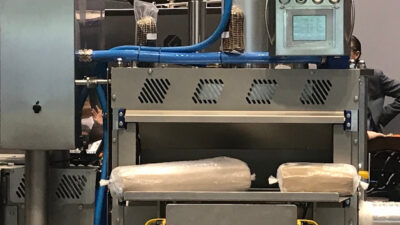Companies looking to get a good return on investment (ROI) on their quality management system (QMS) should do research before picking one and make sure the system meets company and customer requirements.
Hopefully, you are not thinking about how to get return on investment (ROI) on the quality management system (QMS) you have already decided to invest in. If you’ve made the decision to invest funds, you’ve probably made the business case. However, you might want to look at some criteria for expediting the business case—for delivering earlier (which typically means a higher ROI than projected). If you haven’t made the decision to invest in QMS, here are some areas that should be included in your presentation of the merits of the investment.
Generally, there are two areas that go into the calculation of the cost of quality. The cost of good quality (all the resources focused on prevention and improvement), and the cost of poor quality (all the resources used to handle defects or failures). Poor quality encompasses scrap and rework within the manufacturing process, and the costs associated with delivering a failed product such as complaints, returns, warranties, and recalls.
Understanding the history of these costs within your own operations is a start. Harder to determine is the potential for future product defects and failures, and the difference between what can be expected with the status quo, and what can be expected if a QMS is supporting your quality processes. If a QMS can help improve the current state, companies should define which metrics are being used as a baseline to improve.
Don’t forget factors that can potentially replace the bandwidth currently used to deal with quality issues. Factors could include more line capacity to generate additional revenue, or improved quality could improve brand and increase orders.
Accelerating ROI
Now that improvement goals have been set and the dollar value business case on the return has been quantified, the next question is what companies can do to increase the likelihood of hitting their targets.
First, choose a QMS wisely. Get plenty of implementation references and case studies that give you confidence the implementation process is streamlined and proven. Understand how quickly most companies realize an ROI.
Second, select a system designed to quickly implement productivity measures. The ROI period is dependent on the speed with which you can execute your initiatives and begin to measure the improvement against your established metrics. The faster the measures are implemented, the faster ROI can be tracked.
Third, make sure the system you choose is capable of meeting customer requirements, such as the need for traceability as a proof method. Also, make sure those requirements can be attained in a short period of time. This will also help secure follow-up orders, and contribute to the piece of your business case related to increasing the top line, versus merely improving the bottom-line costs.
Finally, make sure the quality system meets initiatives today and can support future initiatives. You will most certainly expand your concept of product quality over time. Make sure to choose a system that goes beyond the shop floor to span the product lifecycle – from ideation to realization to utilization.
MESA International
Valérie Goulévitch, head of marketing and communication at Siemens PLM Software, member of MESA International. This article originally appeared on MESA International’s blog. MESA International is a CFE Media content partner. Edited by Chris Vavra, production editor, CFE Media, [email protected].



